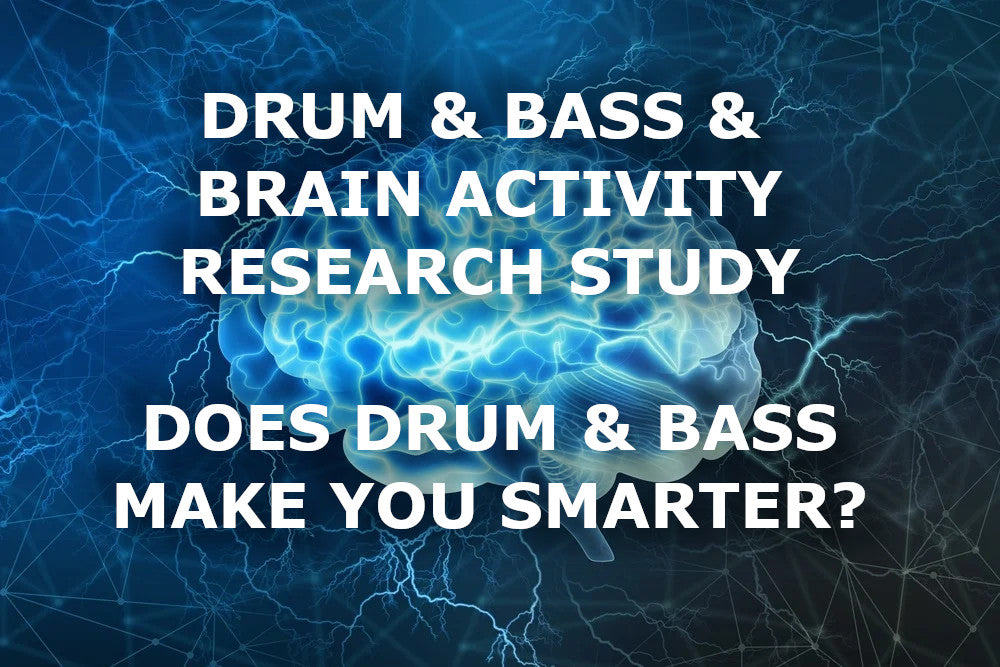
Does Drum and Bass Make You Smarter? New Research Study on DnB & Brain Activity
Share
The Influence of Drum and Bass on Brain Activity
A recent study published in Neuroscience explores how drum and bass elements affect the brain’s response to pop music. Researchers found that removing drum and bass from a song increased brain activity in regions linked to auditory processing and cognitive effort. Conversely, when participants listened solely to drum and bass, their brains showed heightened activity in areas associated with movement and rhythm perception. These findings highlight the crucial role of drum and bass in shaping musical experience and interpretation.
Rhythmic Foundation of Pop Music
Drum and bass components serve as the rhythmic backbone of pop music, helping listeners engage with and perceive the beat. Drums provide a structured framework of beats, while bass lines reinforce the song’s harmonic foundation. Together, these elements create a metrical structure that allows listeners to follow the rhythm more easily, often encouraging movement in response to the music.
Prior Research and Study Objectives
Previous research has shown that rhythmic complexity impacts brain activity, particularly in areas involved in movement and reward processing. However, most studies have examined isolated drum patterns or melodies rather than the full, layered compositions found in real-world music. This study aimed to bridge that gap by analyzing how the brain responds to the removal or isolation of drum and bass components within complete musical excerpts.
Study Design and Methodology
Researchers recruited 25 participants, all aged 20 to 29, who regularly listened to Mandarin pop music but had no formal knowledge of the Korean language. This ensured they were unfamiliar with the Korean pop music excerpts used in the experiment. Participants underwent functional magnetic resonance imaging (fMRI) scans while listening to different versions of 18 Korean pop songs.
To isolate the effects of drum and bass, AI-based algorithms were used to generate three versions of each song excerpt:
-
Whole Music Version – Included all instrumental and vocal elements.
-
Drum & Bass Version – Contained only the drum and bass, excluding vocals and other instruments.
-
Vocals & Others Version – Included vocals and additional instruments but omitted drum and bass.
Each participant listened to all three versions while their brain activity was recorded. They also rated their preference for each version, though they were not specifically asked to assess rhythm perception or movement sensation.
Findings and Neural Activity Patterns
Brain imaging revealed distinct neural activation patterns depending on the version of the music participants heard:
-
Vocals & Others Version: Increased activity in regions associated with cognitive effort, particularly in the auditory dorsal pathway. This suggests that when drum and bass were removed, the brain had to exert more effort to process timing and musical structure.
-
Drum & Bass Version: Heightened activation in brain areas linked to movement simulation, notably the right ventral premotor cortex and left dorsolateral prefrontal cortex. These regions are involved in motor planning and are associated with the brain’s mirror neuron system, which helps synchronize movements with rhythmic patterns.
-
Whole Music Version: Did not show significantly different activation compared to the other two versions, suggesting that drum and bass have a stronger effect on neural activity than listening to a complete song alone.
Implications and Limitations
This study underscores the fundamental role of drum and bass in shaping how the brain processes pop music. However, certain limitations must be acknowledged:
-
Participants were not explicitly asked about their urge to move, meaning the study does not directly measure groove sensation—the feeling of wanting to dance or tap along.
-
Future research could incorporate direct assessments of movement intention and physical responses to rhythm.
The study, “The Presence of Drum and Bass Modulates Responses in the Auditory Dorsal Pathway and Mirror-Related Regions to Pop Songs,” was authored by Chia-Wei Li and Chen-Gia Tsai.







